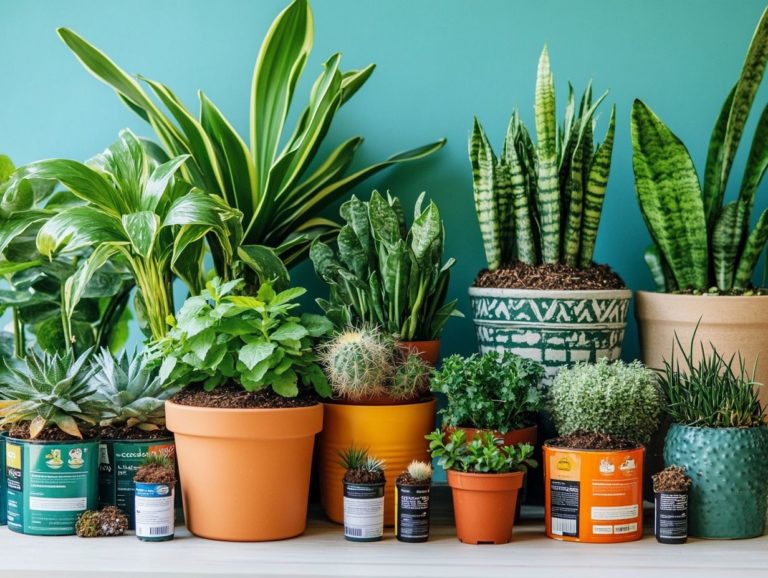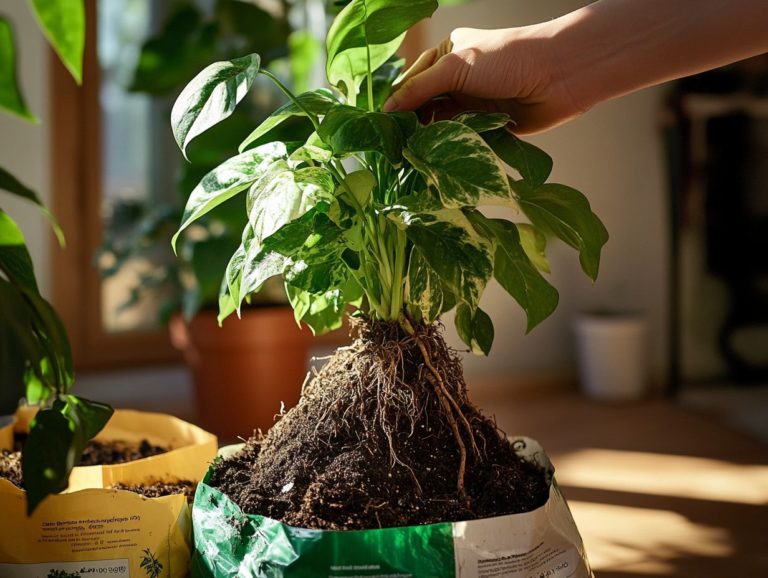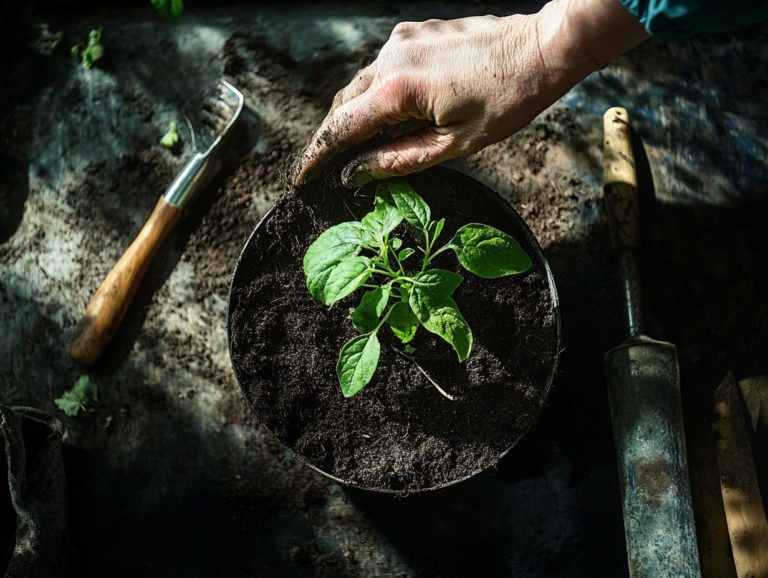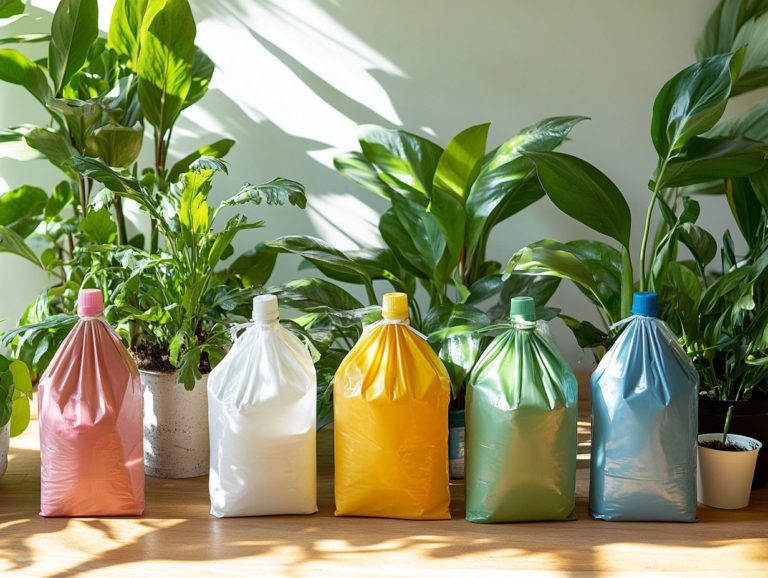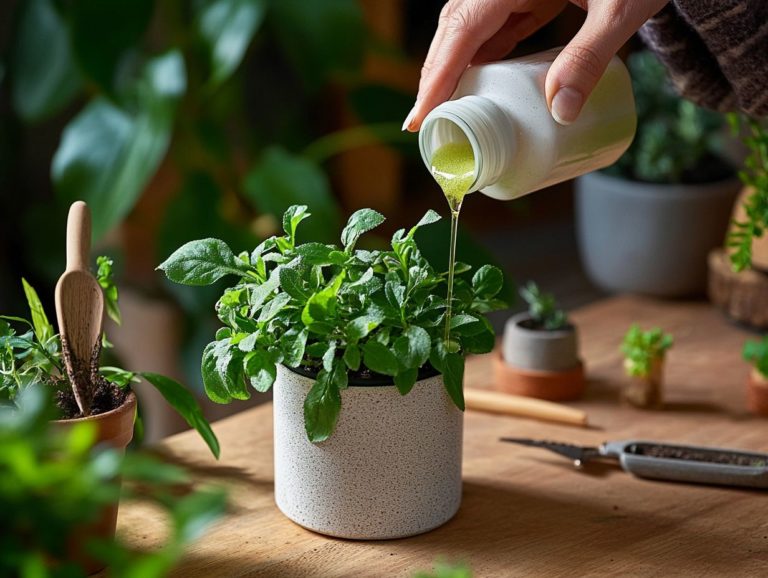How to Use Slow-release Fertilizers for Plants
Slow-release fertilizers represent an invaluable choice for gardeners and plant enthusiasts, offering a balanced and efficient method to nourish plants over time. Curious to discover how these fertilizers can transform your gardening experience?
This article delves into the essence of slow-release fertilizers, highlighting their key benefits such as long-term nutrient release and a reduced risk of over-fertilization. You ll discover the various types available, ranging from organic to synthetic options.
This article also covers effective application methods, recommended dosages, and tips for maximizing your results. Are you ready to provide your plants with the care they truly deserve? Let s dive in!
Contents
- Key Takeaways:
- Understanding Slow-release Fertilizers
- Benefits of Using Slow-release Fertilizers
- Types of Slow-release Fertilizers
- How to Use Slow-release Fertilizers
- Tips for Maximizing Results
- Frequently Asked Questions
- What are slow-release fertilizers and how do they work?
- How do I apply slow-release fertilizers to my plants?
- When is the best time to use slow-release fertilizers for plants?
- How often should I use slow-release fertilizers for plants?
- Can all plants safely use slow-release fertilizers?
- Can slow-release fertilizers be used for both indoor and outdoor plants?
Key Takeaways:
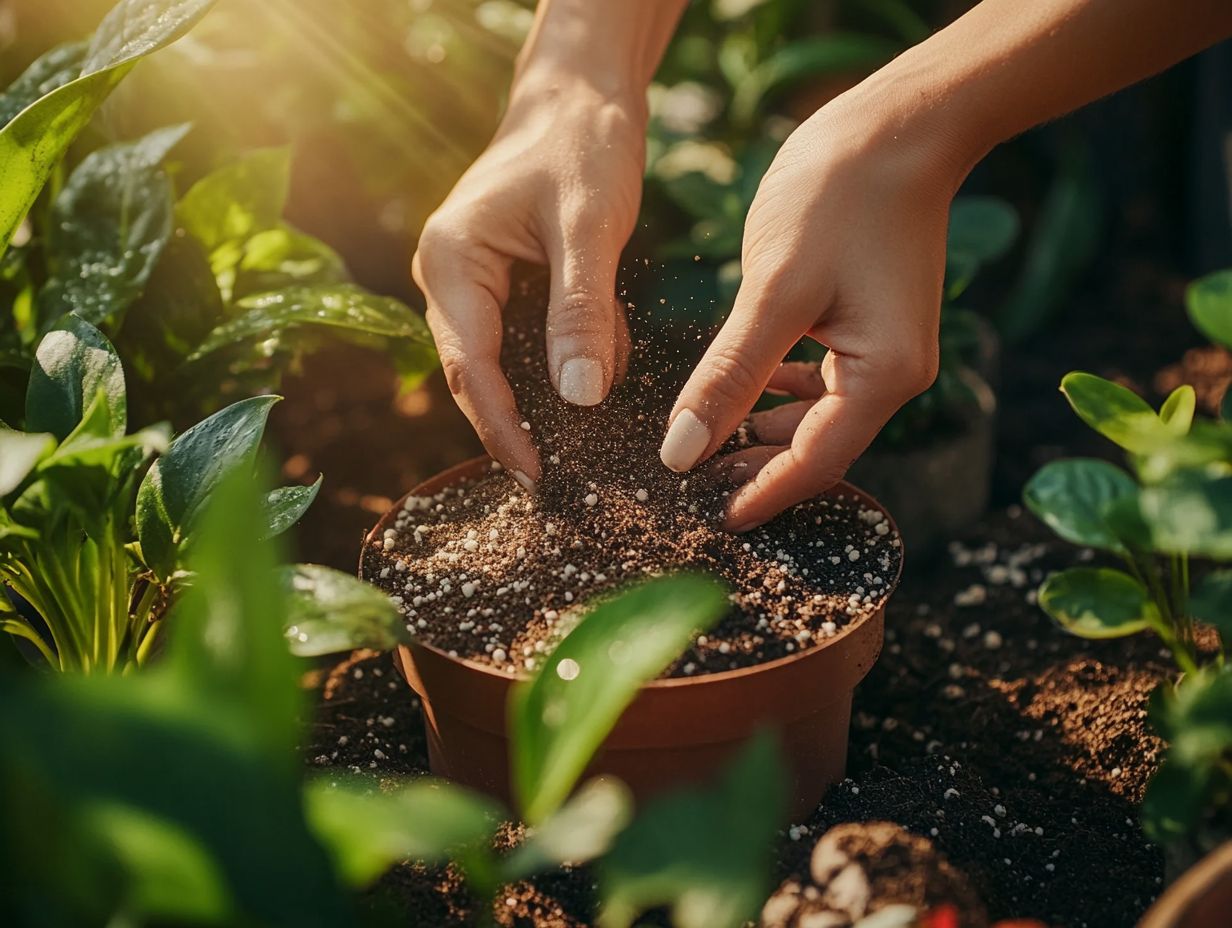
- Slow-release fertilizers provide a longer-lasting supply of nutrients for plants, reducing the need for frequent applications.
- These fertilizers also help minimize the risk of over-fertilization, which can harm plants and the environment.
- Follow proper methods and dosages when using slow-release fertilizers for the best results.
Understanding Slow-release Fertilizers
Grasping the nuances of slow-release fertilizers is vital for achieving the pinnacle of plant growth, particularly in the realms of home gardening and lawn care. These fertilizers deliver a steady supply of nutrients over an extended duration, proving especially advantageous for turf grasses and vegetable gardens alike.
Unlike their quick-release counterparts, slow-release fertilizers significantly minimize the risk of fertilizer burn and nutrient leaching. They are carefully made to cater to the specific nutrient requirements of various soil types, fostering ecosystem health while simultaneously enhancing balanced nutrition for your plants.
What are Slow-release Fertilizers?
Slow-release fertilizers are expertly crafted products designed to gradually release nutrients over time, ensuring your plants receive a consistent supply of essential elements.
These fertilizers are developed through various innovative methods, such as coating granules with synthetic polymers or using naturally occurring materials, which are vital in regulating nutrient availability. You ll find options in both organic forms like composted manure or bone meal and synthetic varieties, such as polymer-coated urea, catering to your unique gardening preferences.
The mechanisms behind nutrient release can vary significantly. Some fertilizers depend on temperature or moisture levels to control nutrient dispersion, while others maintain a steady flow based on microbial activity in the soil. This targeted approach not only enhances nutrient uptake by your plants but also minimizes the risk of leaching, making it an environmentally friendly choice.
Benefits of Using Slow-release Fertilizers
Opting for slow-release fertilizers offers numerous benefits. These advantages substantially enhance plant health and elevate your gardening experience.
These fertilizers cater to the nutrient requirements of your plants with remarkable efficiency. They provide a controlled release that harmonizes with their growth cycles.
This approach not only mitigates the chances of over-fertilization and fertilizer burn but also fosters sustainable growth by curbing nutrient leaching into the ecosystem.
With these advantages at your disposal, you can cultivate a healthier and more vibrant landscape that truly stands out.
Long-term Nutrient Release
One of the standout benefits of using slow-release fertilizers is their remarkable ability to provide nutrients over an extended period. This ensures that your plants have continuous access to essential elements throughout their growth cycle.
This gradual nutrient delivery is key, as it perfectly aligns with the various stages of a plant’s development, from the moment of germination all the way to flowering.
Unlike conventional fertilizers that may overwhelm plants with a sudden burst of nutrients they can t fully absorb, slow-release options offer a steady supply over time. This consistent availability creates a well-balanced nutritional foundation, vital for optimal growth and bolstering resilience against diseases.
When nutrients are available at the right times, your plants will flourish like never before, boosting their health and productivity.
Reduced Risk of Over-fertilization
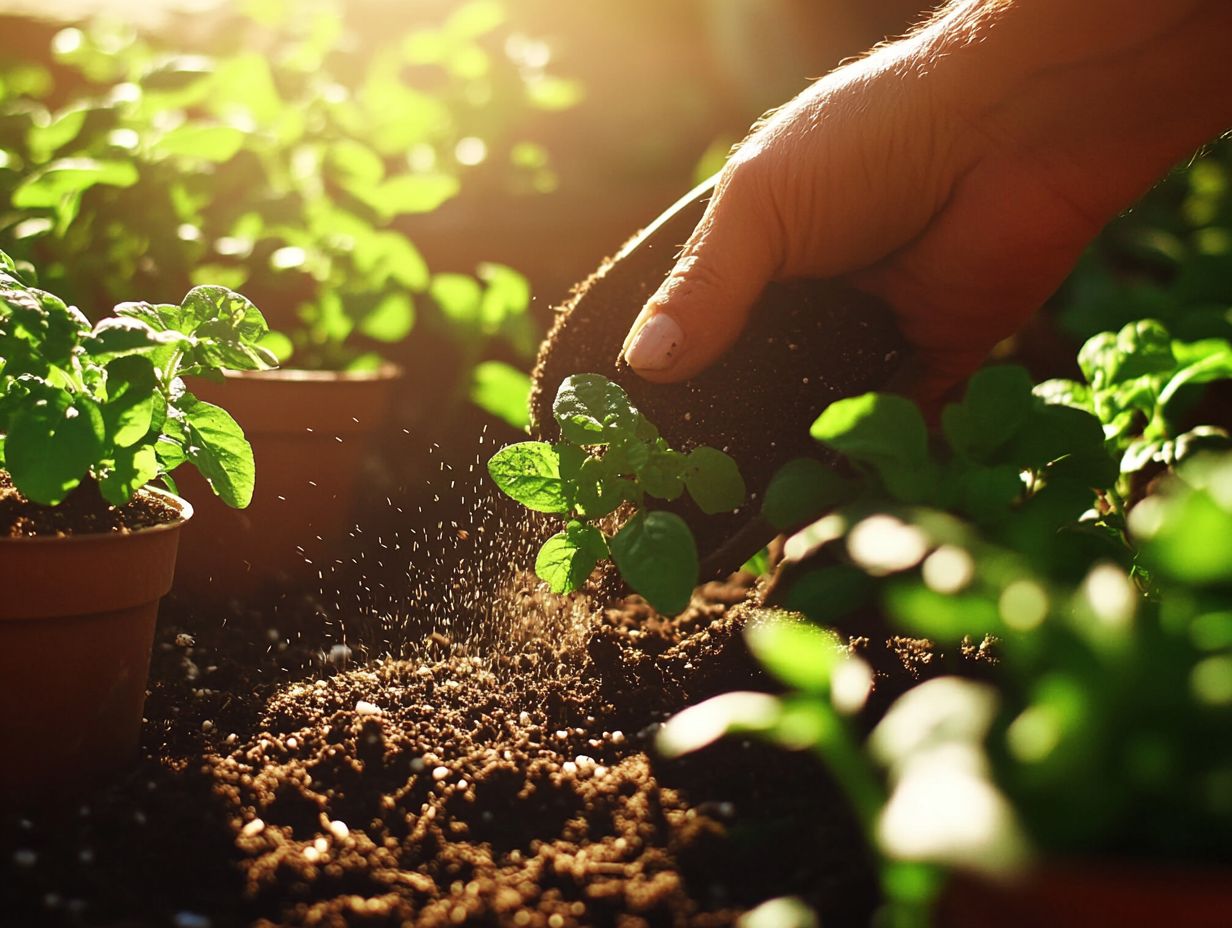
Slow-release fertilizers are your best friend when it comes to minimizing the risk of over-fertilization a frequent dilemma that can lead to fertilizer burn and nutrient deficiencies in your plants.
Slow-release fertilizers gradually release nutrients over time. This ensures a consistent supply without sudden spikes that can overwhelm plants.
When you introduce new seedlings to your garden, traditional quick-release fertilizers can scorch their roots. This may stunt their growth or even cause them to wither away.
On the flip side, opting for a slow-release fertilizer offers a gentler feeding approach, fostering root development and enhancing resilience. In areas with unpredictable rainfall, the steady nutrient release acts as a safeguard against leaching, allowing your plants to thrive even in the face of fluctuating conditions.
Types of Slow-release Fertilizers
You ll find a variety of slow-release fertilizers at your disposal, primarily divided into organic and chemical options.
Each type boasts unique characteristics and advantages that can effectively meet your specific gardening requirements.
Organic vs. Synthetic
Organic slow-release fertilizers come from natural sources, while synthetic options are crafted through chemical processes to deliver precise nutrient supplies. This difference plays a big role in how they work and can affect your gardening approach.
Organic fertilizers, made from materials like compost, manure, or bone meal, do more than just enrich the soil with essential nutrients; they also enhance its structure and foster microbial activity over time.
On the other hand, synthetic fertilizers boast high nutrient levels that can provide immediate results, making them an enticing choice for quick fixes. However, the potential for nutrient leaching and their adverse effects on long-term soil health raises some red flags.
As a gardener, it’s important to carefully consider these differences in light of your specific goals, whether you re aiming for sustainable growth or seeking rapid plant responses.
How to Use Slow-release Fertilizers
Understanding the proper application of slow-release fertilizers is essential for maximizing their benefits and fostering healthy plant growth throughout the gardening season.
Mastering this technique not only enhances the vitality of your plants but also optimizes your gardening efforts, ensuring lush and thriving greenery.
Application Methods
You’ll find various application methods for slow-release fertilizers, each tailored to specific gardening scenarios.
Granular fertilizers stand out for their straightforward application and their capacity to deliver a consistent flow of nutrients over time. This makes them perfect for flower beds and vegetable gardens. You can easily spread them across the soil or mix them in during planting.
Conversely, liquid fertilizers provide quicker absorption, which is especially advantageous for container plants or lawns that require an immediate nutrient boost. Timing is essential when choosing between these options. For instance, applying granular fertilizers in early spring can set your gardens up for optimal growth, while liquid fertilizers can help mid-season recovery or elevate nutrient levels as needed.
Recommended Dosage
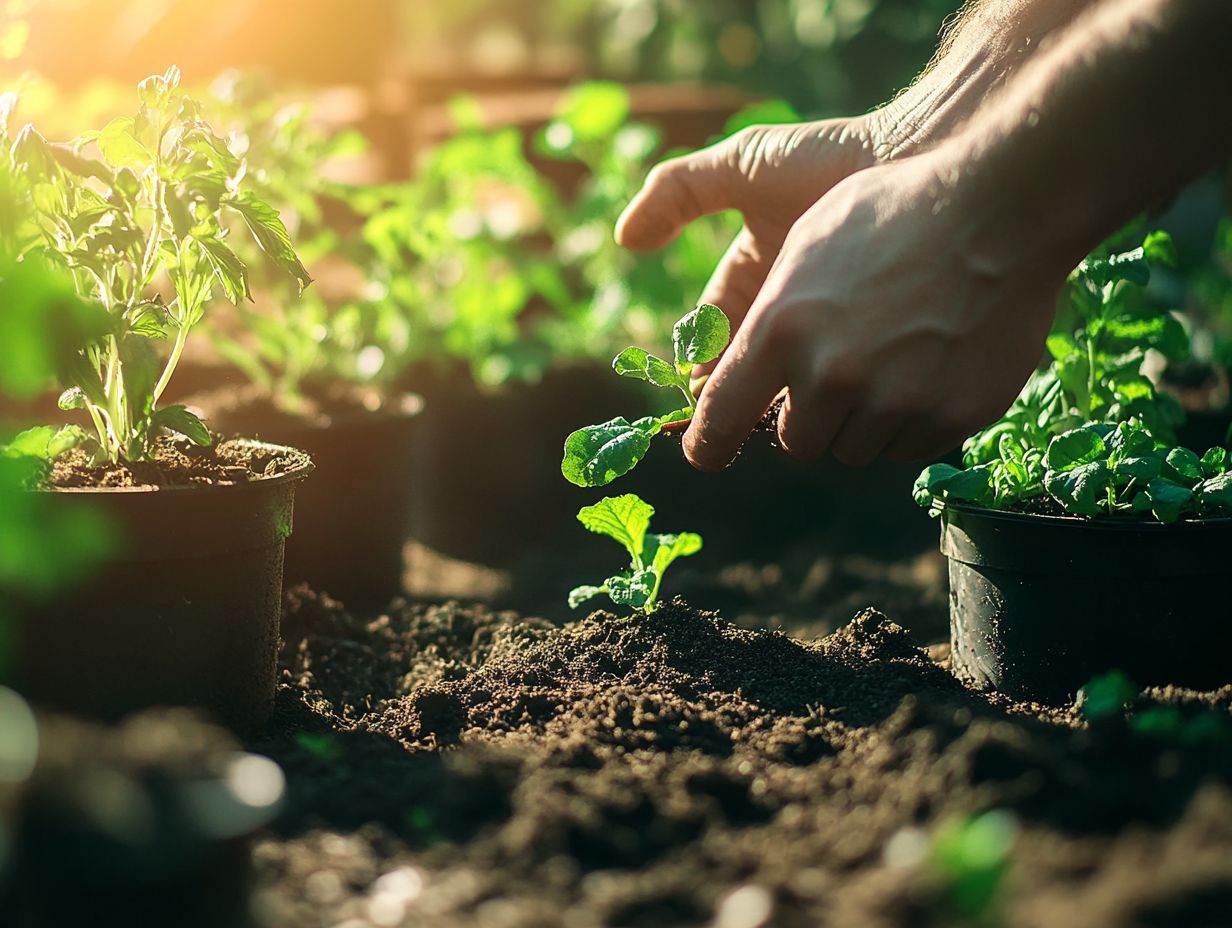
Determining the right dosage of slow-release fertilizers is crucial for fulfilling your plants’ nutrient requirements while avoiding the pitfalls of over-fertilization.
When reading fertilizer labels, understanding the N-P-K ratio is key. This ratio indicates the levels of nitrogen, phosphorus, and potassium in the mix, which are vital for your plants’ growth.
Consider factors like soil type, moisture levels, and the growth stage of your plants. These elements can greatly impact the suitable dosage. For instance, younger plants often need different concentrations compared to their mature counterparts, and sandy soils may leach nutrients faster than clay soils.
By thoughtfully looking at these variables, you can develop a fertilization plan that encourages optimal health and growth for your garden. Act quickly to develop this plan to optimize your garden’s health.
Tips for Maximizing Results
To maximize the benefits of slow-release fertilizers, use specific gardening tips. These tips enhance effectiveness and support robust plant growth.
By implementing these strategies, you can ensure your garden thrives beautifully.
Proper Timing and Maintenance
Proper timing and maintenance are essential for ensuring that these fertilizers provide optimal nutrients to your plants when they need them most.
Understanding the ideal moments to apply these fertilizers can significantly enhance the health and growth of your plants. Aim to apply them in early spring, right as new growth begins to emerge. Apply at this time to give your plants the nutrients they crave during their busiest growing season!
If you re working with different soil types, such as sandy or clay-rich soils, it s crucial to adjust your application based on each soil’s ability to hold nutrients. Regularly monitoring moisture levels and accounting for rainfall will help maintain the fertilizer’s effectiveness throughout the gardening season. This ensures your plants receive a steady nutrient supply without being overwhelmed.
Combining with Other Fertilizers
Combining slow-release fertilizers with other types whether organic or chemical can significantly enhance your plants’ growth.
By strategically blending these fertilizers, you ll be able to customize the nutrient delivery to meet your plants’ unique needs over time. For instance, incorporating organic options like compost alongside these formulations not only increases nutrient availability but also enriches soil structure and boosts tiny organisms in the soil that help plants grow.
This powerful combination fosters robust root development and promotes overall plant health. Utilizing quick-release fertilizers during crucial growth stages provides an immediate nutrient boost, ensuring your plants have access to essential elements exactly when they need them. Embracing such integrated approaches not only leads to healthier crops but also cultivates a more sustainable gardening practice.
Frequently Asked Questions
What are slow-release fertilizers and how do they work?
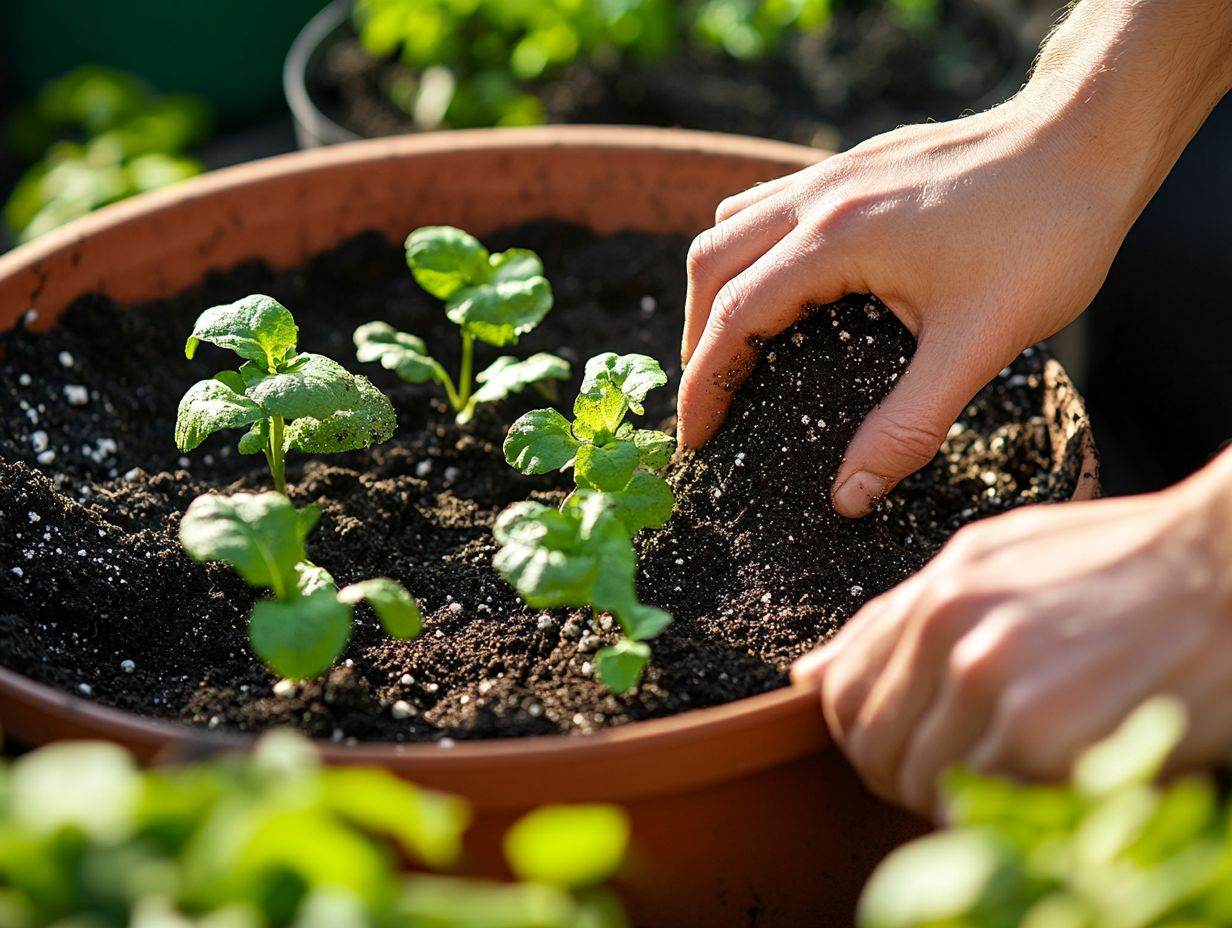
Slow-release fertilizers are types of fertilizers that release nutrients gradually over time, providing a steady supply of nutrients to plants. They work by coating the fertilizer particles with a material that controls the release rate, ensuring plants receive a consistent and sustained dose of nutrients.
How do I apply slow-release fertilizers to my plants?
Slow-release fertilizers can be applied in various ways, depending on the product. Many come in convenient granule form and can be scattered around the base of the plant, while others come in liquid or spike form and can be inserted directly into the soil. Follow the instructions on the product label for specific application methods.
When is the best time to use slow-release fertilizers for plants?
The best time to use slow-release fertilizers for plants is at the beginning of the growing season. This allows the fertilizer to slowly release nutrients over the course of the season, providing plants with the necessary nutrients for healthy growth. However, some slow-release fertilizers can also be applied during the growing season for a continuous supply of nutrients.
How often should I use slow-release fertilizers for plants?
This will depend on the specific product and the needs of your plants. Some slow-release fertilizers can last for several months, while others may need to be applied more frequently. Always follow the instructions on the product label for the recommended application frequency.
Can all plants safely use slow-release fertilizers?
Most slow-release fertilizers are safe for use on a wide variety of plants. However, it is important to check the product label to ensure that it is suitable for the specific type of plant you are fertilizing. Some plants may have specific nutrient requirements that may not be met by a general slow-release fertilizer.
Can slow-release fertilizers be used for both indoor and outdoor plants?
Yes! Slow-release fertilizers work well for both indoor and outdoor plants.
Choose a fertilizer that suits the type of plant you have. Check the product label for specific instructions and precautions for indoor use.


